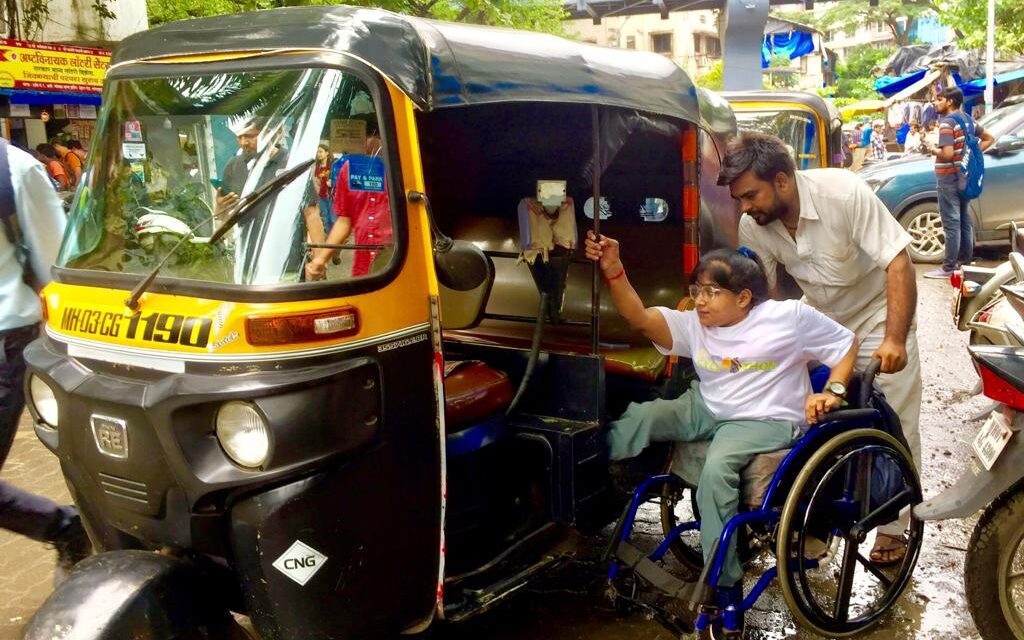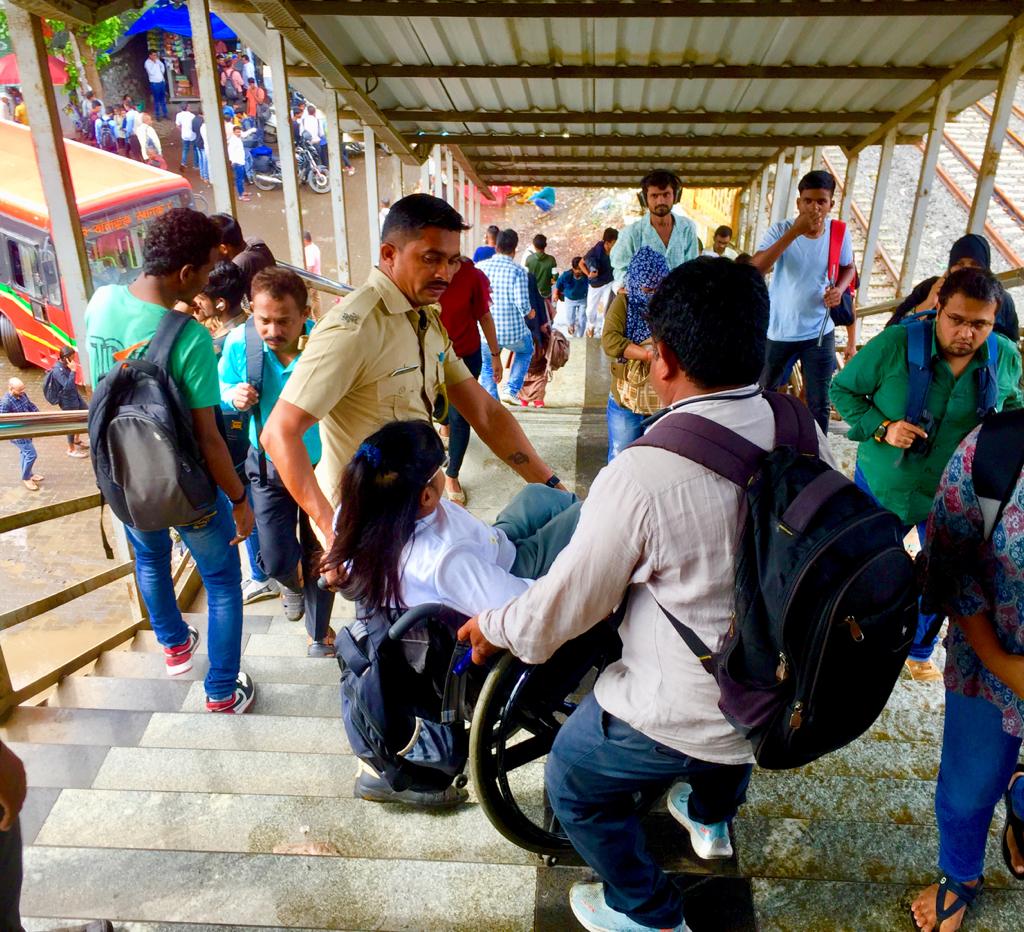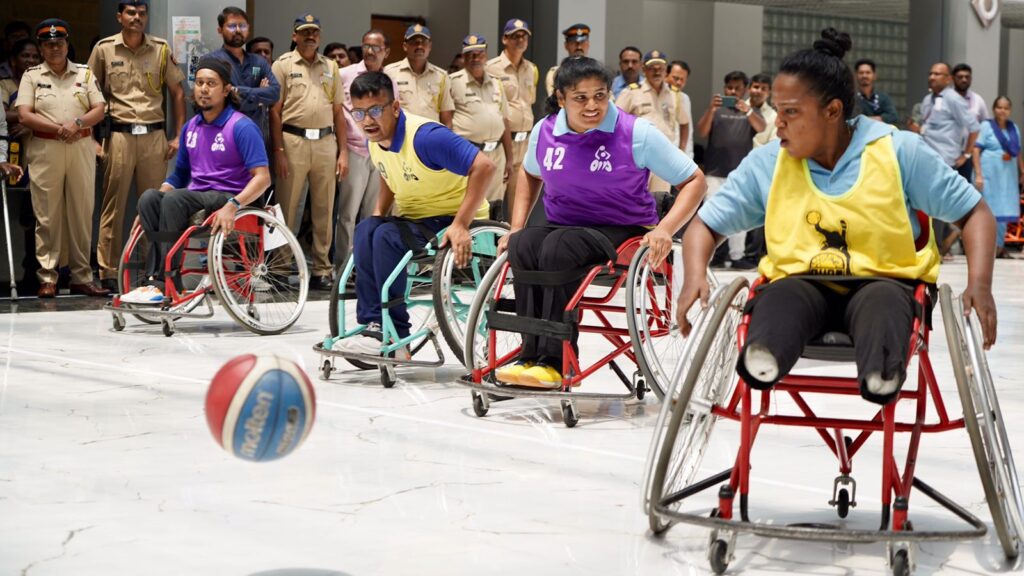After being confined within the four walls of her house all her life, Neetu Mehta, finally ventured out on her own, six months ago.
“Basic transport accessibility is the bare minimum anyone can ask for, in the pursuit of growth and equal opportunities,” says Neetu, who has been travelling by Mumbai’s local train in her wheelchair, with great difficulty and help from fellow commuters.
A fever during her infancy had left her legs with irregular development, a condition that changed her life. The risks and uncertainties while using public transport to reach places, and the pressure of being a burden on her family for the same, always restricted her.
Apart from attending a few family gatherings, the world beyond her doorstep remained largely unexplored. “I never went to school, I never made any friends outside. I had a home tutor, who taught me the basics of reading and writing. I did not complete any formal education,” she said.
However, few months ago, a social media contact told her about a gathering of differently-abled individuals, who come together every weekend to play different sports in their wheelchairs. Despite her initial reservations, Neetu chose to give it a try. But the main challenge for her was the 20 km distance from her house to the sports complex.
Mumbai’s public transport lacks accessibility on various fronts. For instance, in local trains, individuals in wheelchairs must rely on fellow passengers to lift and assist them in boarding. They have to locate ramps and lifts at different stations, which are often not available. Not all rickshaws or taxis accommodate pick-ups for wheelchair users, due to the inconvenience of folding the wheelchair. Neither are all BEST buses wheel-chair friendly.
Neetu’s arduous journey
This correspondent travelled with Neetu, from her home in Charni Road, south Mumbai to Mumbai University’s sports complex, at Kalina, Santacruz east on August 5. To reach her destination by 11 am, Neetu starts by leaving her house at 8.30 am, which is on the fourth floor without an elevator. She climbs down slowly, step by step, using calipers, which takes her half an hour to reach the ground floor.
She then sits on her wheelchair and waits for a taxi outside her building. She hails a taxi and the driver gets down, helps her get into the car, folds her wheelchair and keeps it on the carrier on top. “Many times the taxis don’t stop because they say the carriers will break or their seats will get dirty and tear,” she says recalling past incidents.
The taxi takes her to Churchgate station. Despite living closer to Charni Road station, Neetu is forced to travel further to Churchgate, because Charni Road lacks wheelchair accessibility. “Also instead of getting down at Santacruz, which is closer to my destination, I have to get down at Bandra station, for the same reasons,” Neetu says adding that the extended trips mean more time and more expense.

All trains start at Churchgate station. She waits for the train to arrive, after which she meets the motor man (driver of the train) and requests him to halt a few seconds extra at Bandra station for her to get down. “Sometimes they forget and it becomes very scary to get down on time,” she says.
Then, she looks out for friendly strangers, who could help her get into the train compartment, due to the gap and difference in height between the train door and the platform. After a struggle and some help, she gets inside.
If she gets down at a station without wheelchair access to exit, she has to request people to carry her down the stairs of the footover bridge.

As her train approaches Bandra station, she again requests people to help her get down. Then once again she has to find a rickshaw driver, who will accommodate her needs – helping her get inside and placing her wheelchair next to the seat after folding it, and repeating it again after finally reaching the destination.

Neetu’s hard and risky journey exemplifies the lengths to which she must go, to navigate a city designed without the needs of differently-abled individuals in mind.
Read more : How the pandemic affected persons with disabilities and why we should care
Other public transport
Around two years ago the BEST launched hydraulic wheelchair-lift in the buses, however, they are barely operational.
A non-profit called Access to Hope, started by Jasmina Khanna, an engineer with cerebral palsy and Sanket Khadilkar, a clinical physiotherapist aim to make Mumbai city accessible to people with disabilities. Around a year ago, they conducted an audit of these buses by traveling from Oshiwara to Andheri, and to their disappointment, some of the buses rejected them while some had non-functional wheelchair-lifts.
“It was sad to see the way one has to struggle and get rejected multiple times just to travel via public transport. One of the buses finally agreed but it took us around 20 minutes to get on board due to the slow functioning wheelchair-lift,” said Khadilkar, who accompanied Jasmina during the audit.
“Fortunately the other passengers were cooperative and did not start yelling at us for the delay,” he added.
Meanwhile, the metro, which is the latest mode of public transport in the city, has become more accessible for the differently-abled. The elevators, ground floor ticket counters, platform at the same level as the metro doors, and designated space for wheelchairs inside the compartment make it easier for individuals to commute.

Mindset and political will
According to the government’s ministry of statistics and programme implementation, people with disabilities comprise between 5 and 8 per cent of the Indian population (around 55 – 90 million individuals) out of which most of them are between the ages of 10 to 30.
“It begins with awareness and a change in mindset. Currently, only those who have a differently-abled person in their life or have inclusive needs are experiencing that pain,” says Shishir Joshi, a veteran journalist and CEO of Project Mumbai, a non-profit working towards accessibility in Mumbai, among various other initiatives including environment and mental health.
In April, Project Mumbai launched “Samavesh,” an initiative to make Mumbai more accessible and inclusive. As part of its efforts to highlight the issues faced by the differently abled, they hosted a wheelchair basketball match at the Mantralaya premises which was attended by the chief minister, deputy chief minister, several cabinet ministers, and the municipal commissioner.

“Individuals can initiate change at a micro level, but significant impact requires the involvement of the state and the government in charge,” he adds, essential aspects such as public and digital infrastructure, support systems, guideline implementation, and last-mile connectivity demand attention. “Numerous areas require intervention, yet the crucial factor which remains is the will to make it happen.”
“My dream is to overcome these hurdles of transportation, finish my education and run my own handicraft business,” Neetushe says.
(This is part one of the two-part series. Part two, focusing on the systemic issues, will follow)